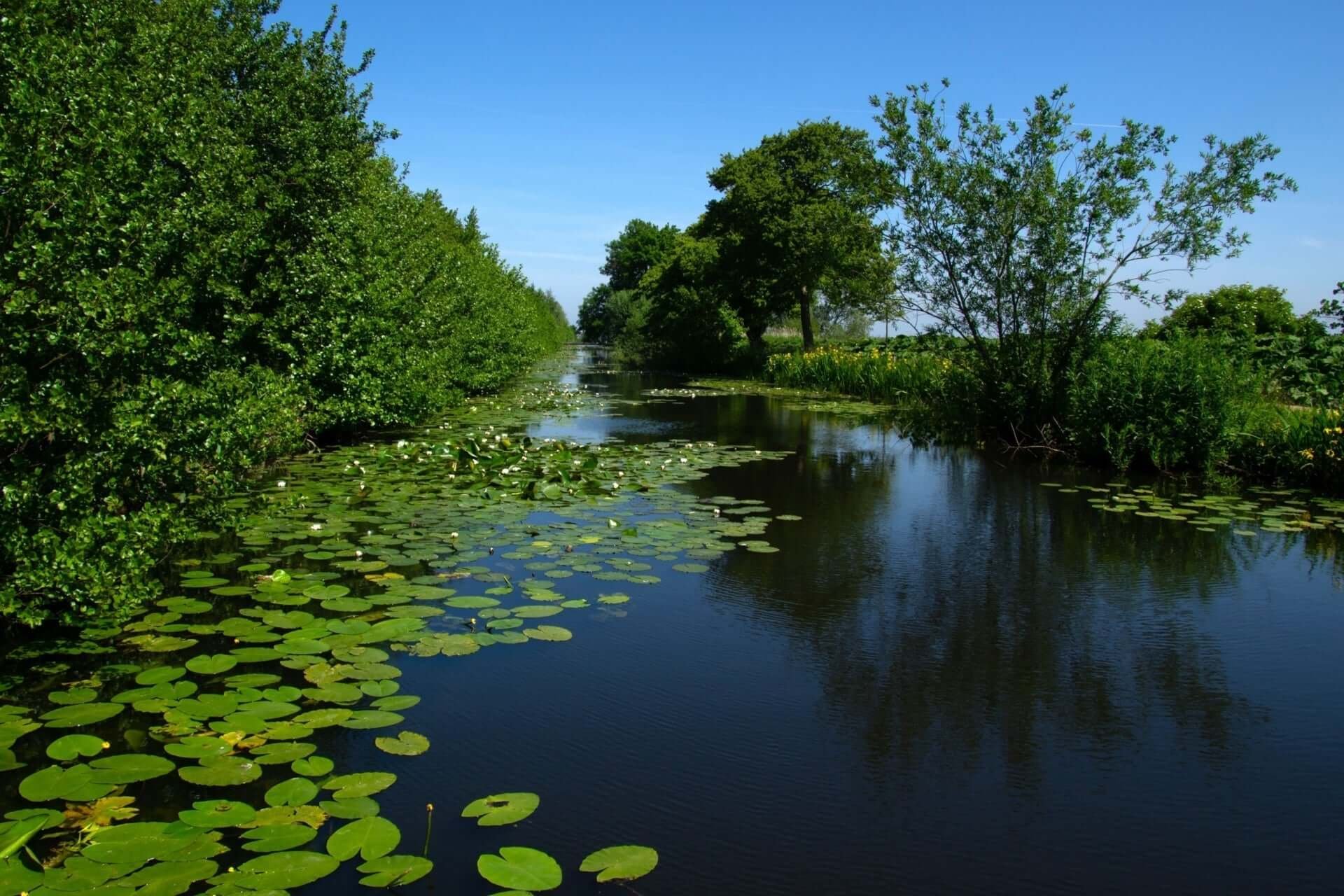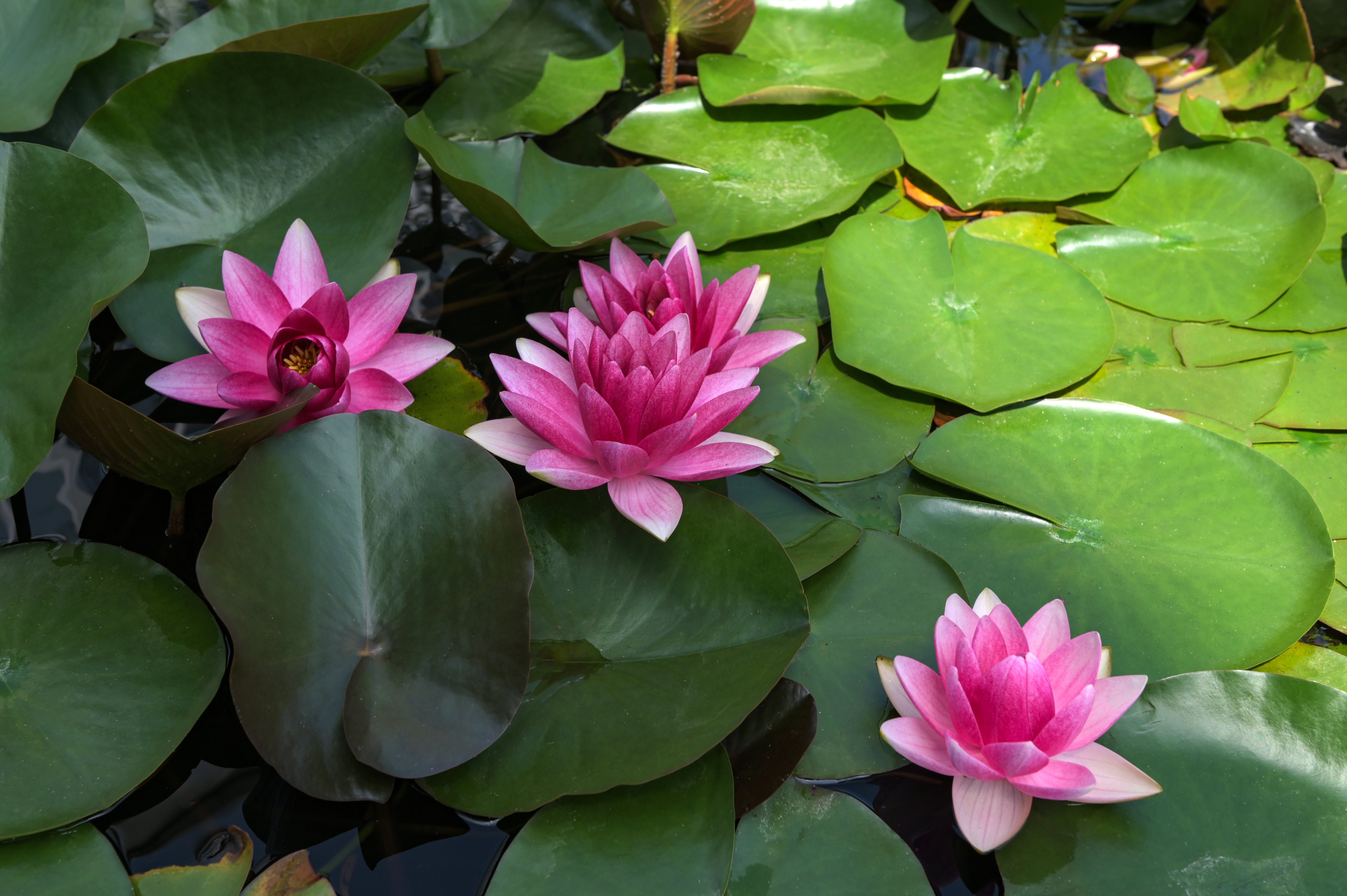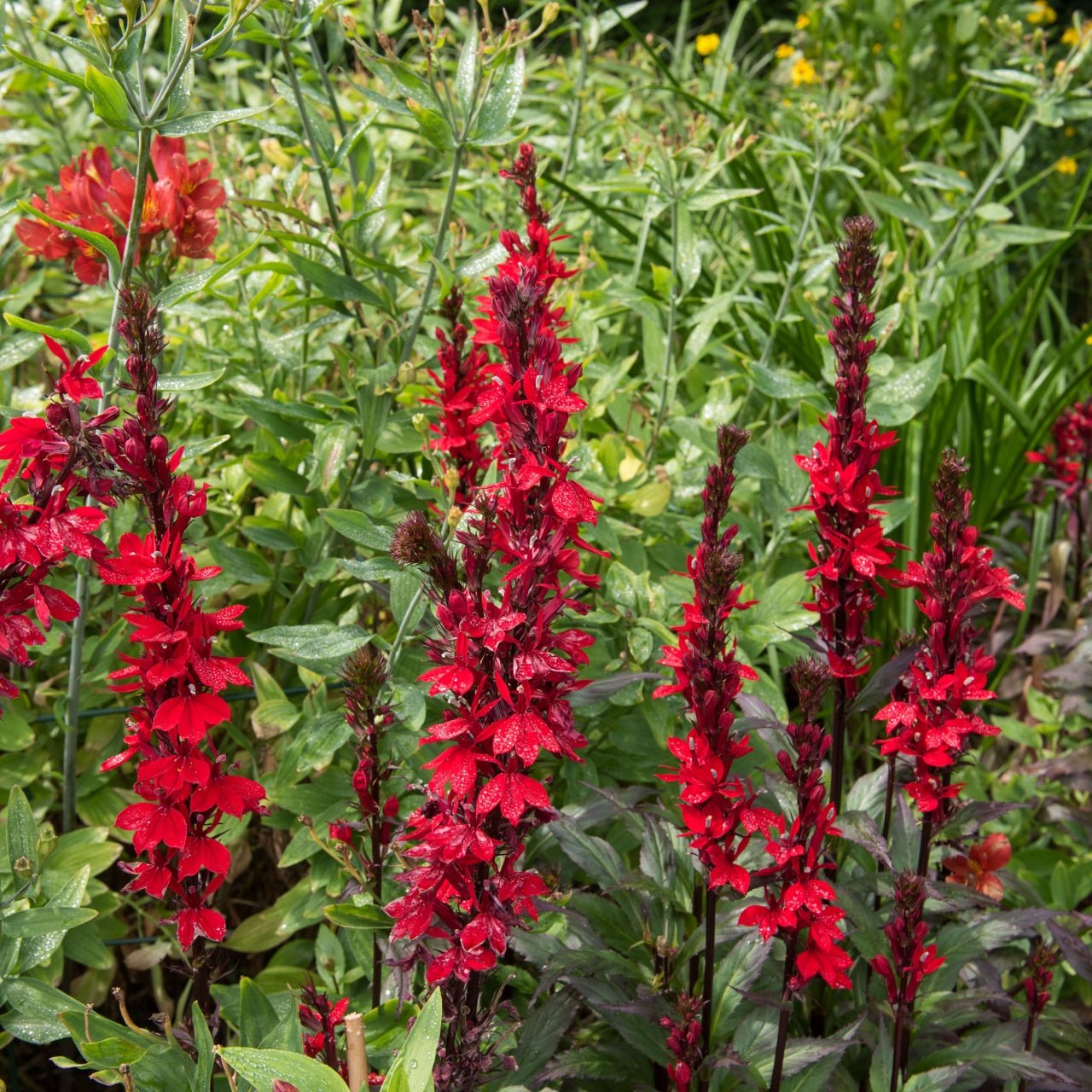Plants That Thrive in Wetland Areas and Retention Ponds
When land is developed, the amount of hardscape versus vegetation changes dramatically. Water that used to sink into the ground runs off these hardscapes, delivering pollutants to streams and ponds. Wetland areas and retention ponds can slow this water down, soaking it into the ground. This reduces pollutants in the water and recharges aquifers.
Typical Pond Construction
Typically, a pond looks like a figure 8. The small top is easily accessible from the road so that silt can be removed. Where the circles meet, a shelf will be planted with wetland plants. Finally, the larger lower circle holds most of the water. The intake pipe delivers water to the top of the upper circle. It sits until the water level forces it downstream into the large pond circle. While the water sits in the small circle, it drops most of the sediment and heavy metals it is carrying. The pond has a dam with an outlet so the pond can be drained completely and an overflow outlet so the water doesn't go over the dam.
Role of Plants
Plants do many things in artificial wetlands and retention ponds. Their roots anchor the soil on the sides of the pond. These same roots absorb water, nutrients, and heavy metals, reducing the pollution in the pond. The leaves of plants reduce erosion due to hard rain. Plants also slow stormwater runoff. Plants improve the appearance of retention ponds and provide habitat for pollinators and wildlife.

Not A Regular Pond
Stormwater retention ponds are not like natural ponds. When it rains, the retention pond's level rises dramatically and inundates the plants on the sides and shelf of the pond. At other times, the edges and shelf may be very dry. The plants that can tolerate both conditions quickly differ from those around a natural pond.
Zones Plants Occupy
Plants around and in retention ponds occupy four different zones. The emergent wetland plants stick up through the shallow water on the pond edges, but their roots are down at the bottom of the pond. Floating plants float with long roots streaming down, but the roots do not touch the bottom of the pond. Submerged plants do not stick out of the water at all. The fourth zone is plants that grow on the shoreline but do not touch the water.
Finding Plants for Each Zone
We have plants for the emergent and bank zones of a water retention pond or wetland. Before ordering plants, you must inventory the pond or wetland and determine how much sun each area gets. Some plants grow only in full sun, others in partial or deep shade.
Trees and woody shrubs shouldn't be planted at the dam or berms because their roots may damage those structures. Do not plant things in the sediment sink because they will be scooped out frequently, and the plants won't survive. Do plant the shore with bank plants. Extension scientists recommend using at least six different species of plants for the plant shelf. Native plants are preferred because they do not need much care after establishing them.
Planting a variety of bank plants has several different functions. This adds biodiversity to the area, and if a disease or pest attacks and kills one plant species, the other species are likely to survive. Cattails are not recommended because they crowd everything else out.
Emergent Plants
Blue Flag Iris
Blue flag iris does well in the shallows of a retention pond. It grows to about three feet tall. The blue-purple flowers are spectacular. The foliage is green. In the fall, it turns brown when it freezes back. The foliage will return in the spring.
Cardinal flowers like moisture. The foliage is reddish-green with red flowers on top of the stem. Cardinal flowers will grow in wet soil at the pond's edge or inside. They produce 2-4 feet tall. This is a perennial, so it comes back again and again.
Cinnamon Fern
Cinnamon ferns are hardy ferns that can grow in full sun or partial shade. They reach heights of four feet tall. They have rusty fiddleheads in the spring.
Bank Plants
Golden rod may be the bane of allergy-prone people's existence, but it makes a perfect bank plant. They grow to be 2-6 feet tall. When blooming, yellow flowers tip the arching stems. Goldenrod is a food plant for pollinators, supplying nectar and pollen. Birds and small mammals use golden rods to nest in and eat.
Silky Dogwood
Silky dogwood is a deciduous shrub growing up to 15 feet high. The leaves are green when growing but turn in the fall. The flowers are white and the fruit is blue. Birds and pollinators are attracted to flowers and fruit. This is an understory shrub that likes partial shade and dappled sunlight.
Black-Eyed Susan
Black-Eyed Susan is a cheerful plant that thrives in full sun. The foliage is green. The flowers have bright yellow petals surrounding a brownish-black center. Birds eat the seeds, while pollinators feed on the nectar and pollen.
Red Maple
Red maples have red, showy flowers during early spring. In the fall, their leaves turn red and make quite a show. Red maples grow 50-90 feet tall and spread 30-40 feet, so they need lots of room.
After Care of Plants
Regardless of zone, new plants must be watered by rain, pond water, or irrigation every day for the first 2-3 weeks. Perennials take a year to establish, and 3-5 years for trees to become established. You must water perennials once a week and trees every two weeks until they are established. Once established, the plants will need water only in a drought. Doing a soil test and following the recommendations for fertilization before planting will increase the survival rate of your plants. Once established, the plants will draw the nutrients from the water and fertile silt.
Read more
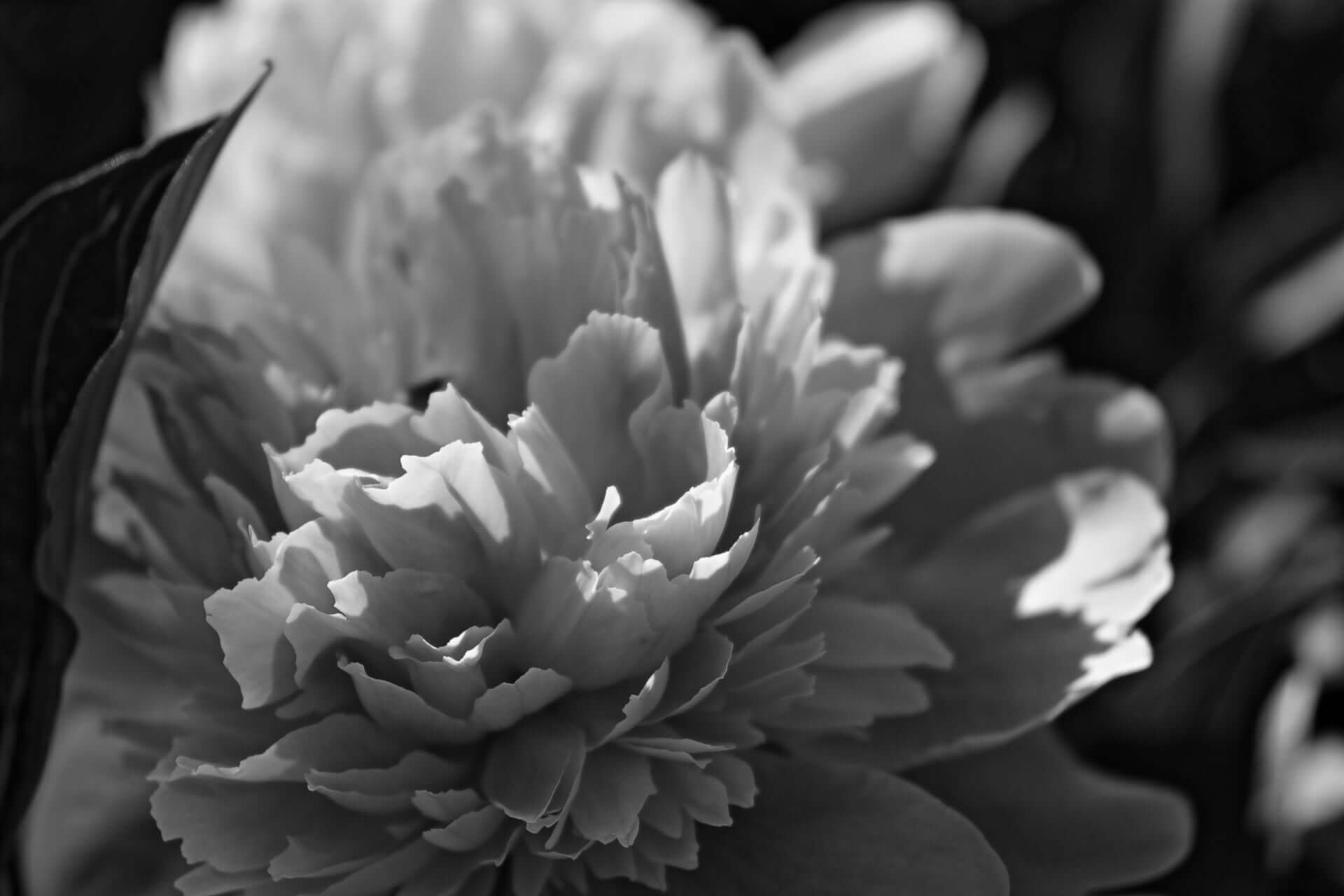
A monochromatic palette for outdoor spaces emphasizes the understated differences in plant form and surface characteristics while generating both peacefulness and inventive ambiance. Thoughtful pla...
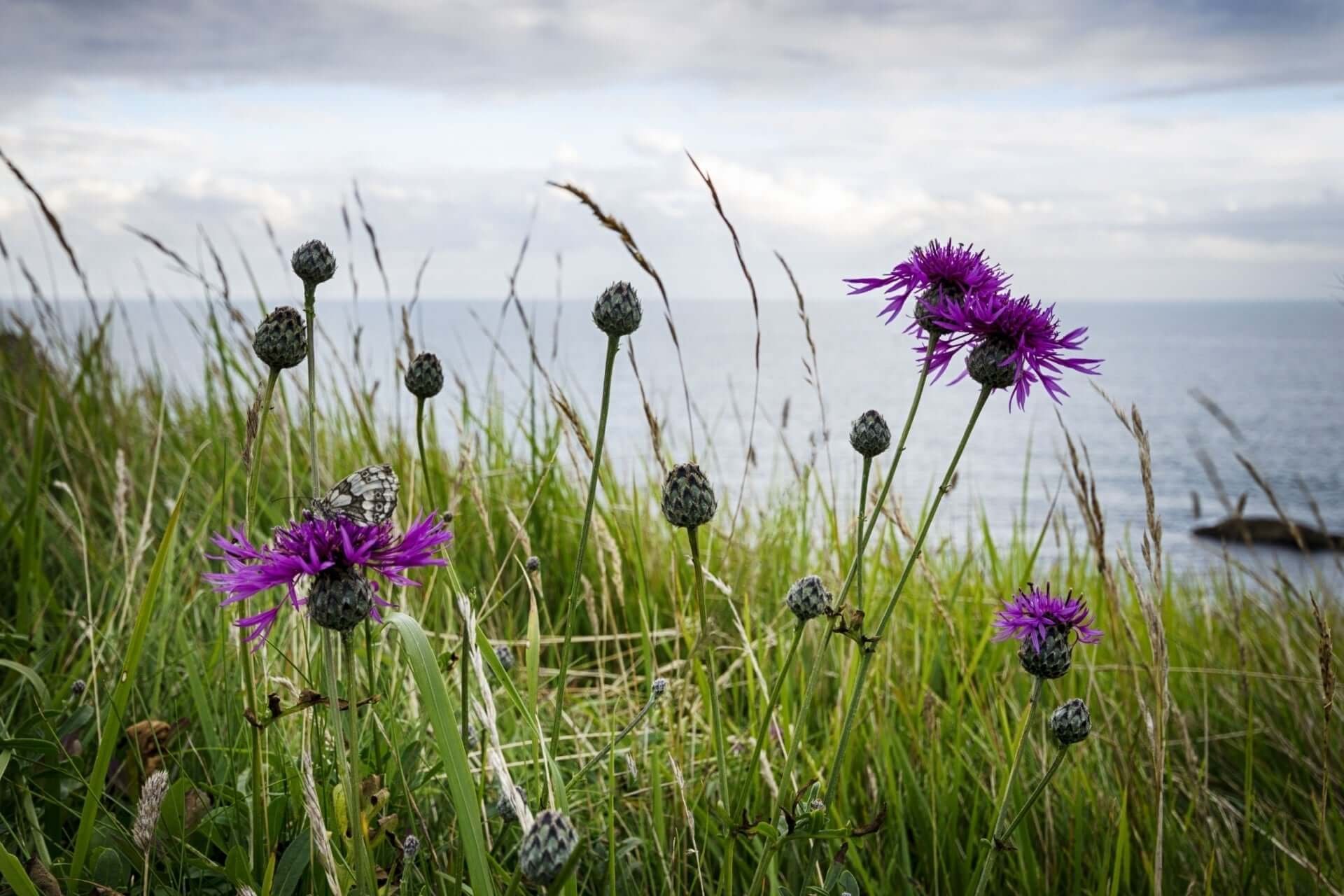
Soil structure suffers in coastal and roadside gardens, and plants become damaged when salt stress results from ocean spray or de-icing chemicals and brackish water. The main strategies for dealing...


